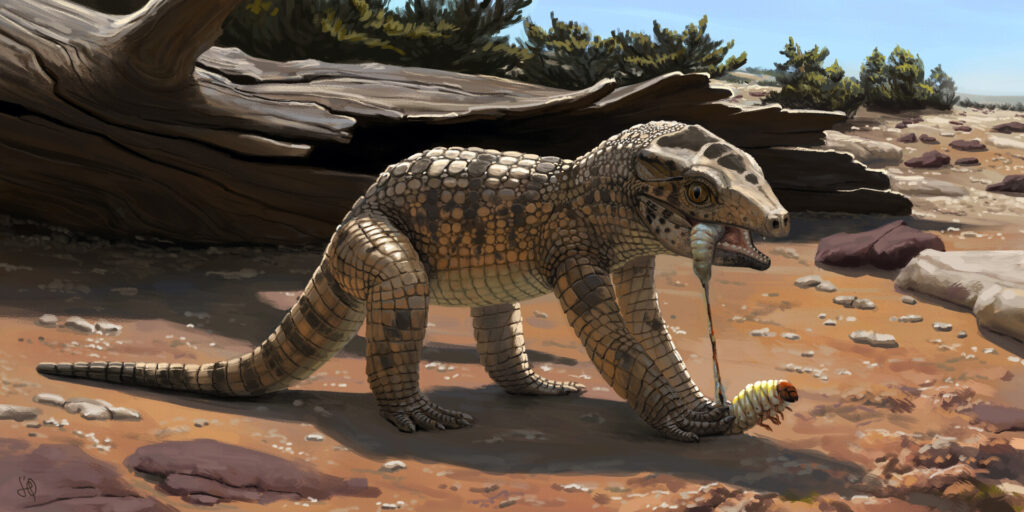
How to prepare your proposal for the Virtual Paleoart Gallery ?
Paleoart is a bridge connecting science and creativity that brings ancient creatures and landscapes back to life. Each piece of paleoart is a time-traveling portal, inviting the public to explore bygone eras. The Virtual Paleoart Gallery celebrates women paleoartists during the Virtual Conference for Women Archaeologists and Paleontologists on Gather Town.
We invite you, women paleoartists, to contribute to the Virtual Paleoart Gallery with your own creative work, breathing life into both ancient humans and non-human beings. Your paleoartistic reconstruction can take various forms and must be accompanied by a commentary that offers insights into the scientific assumptions and artistic choices that underpin your work. And this is where this page will help you!
Your paleoartistic reconstruction
Your contribution may take various forms, including traditional or digital illustrations, comics, step-by-step reconstructions, book covers, sculptures, etc. The originality of the artwork is not mandatory. Please note that artworks created using artificial intelligence are not permitted. We request artworks in JPEG and PNG formats, with a minimum resolution of 300dpi. Additionally, file sizes should not exceed 500 megabytes.
For 3D works, provide a high-quality photo, which can be accompanied by a photogrammetry video accessible through a Gathertown link. The free software Polycom for 3D reconstruction can be downloaded onto your smartphone. We do not accept overly blurry or low-quality photographs.
For exhibition posters or book covers, refrain from including text related to other events, authors and editors, especially for promotional purposes (keeping only the artwork). This information can be included in the accompanying commentary for the artwork. Text is allowed on the artwork if it aids understanding it (eg., legends for elements, steps, etc.).
The Virtual Paleoart Exhibition (VPE) is committed to upholding ethical standards within the realm of paleoart. We ask all participating paleoartists to adhere to the following guidelines.
Inspiration for writing your commentary
Each artwork must be accompanied by a commentary (150-400 words). In this commentary, provide insights into the scientific assumptions, artistic choices, references, and/or specimens that form the basis of your reconstruction. You can explain why you chose to represent these species within this context. Discuss the questions raised by this context and your artwork, as well as any discoveries your work illustrates. Highlight the specific specimens and studies upon which you relied for accuracy. Furthermore, you can address aspects where current science does not offer definitive answers, requiring you to turn to other sources or make choices based on parsimony or artistic interpretation. Your commentary should offer viewers a deeper understanding of the scientific and creative considerations behind your artwork, encouraging further discussion and engagement with the public.
To inspire you, we’ve gathered three examples of contributions from the first Virtual Paleoart Gallery of the VCWAP in March 2023, showcasing a variety of formats and comment lengths. To see more, find all the paleoart contributions in the VCWAP 2023’s Abstract Book (p. 107).
‘The crocodile from the city of seven hill’, by Júlia d’Oliveira
This is the first reconstruction of Eptalofosuchus viridi, a small Notosuchian crocodylomorph from the Late Cretaceous period of Brazil, and it is the first Notosuchia described for the Uberaba Formation (Marinho et al., 2022). The specimen comprises only one incomplete left dentary, but it’s possible to reconstruct its appearance based on its close relatives notosuchians with more complete skeletons. As a small omnivore who lived in a semiarid environment, its ecological niche was probably like that of today’s mongooses. Since there are very few fossils known from Uberaba Formation the environment was reconstructed based on fossils from adjacent geological formations of the same age: the vegetation depicted is a general gymnosperm,

which were still the dominant plants at the time, and are based on the presence of root traces found at the Marília Foration; the beetle larvae being eaten is inspired by beetle trace fossils, from the Adamantina Formation. Even with fragmentary remains, it was possible to collect enough information to give life to this new species.
The paleoartist expresses the issues surrounding this extinct enigmatic crocodylomorph, and on which hypotheses and specimens the paleoartist based his reconstruction of the animal, its behavior and its environment. Here is a short and effective comment that allows the scene to come to life and make us feel the Cretaceous sun shining above!
‘Ceramic decorations of the Early Neolithic of the north-western Mediterranean: sequential impression decoration’, by Jade Duché
At the beginning of the 6th millennium, small groups from the Italian Impressed Ware culture settled in the north-western Mediterranean. These are the earliest known Neolithic occurrences in the region, preceding the development of the cardial culture by several centuries. These impressa groups are characterised by a set of shared practices, but there is no strict homogeneity in the material culture, as shown by the studies of ceramic productions. If the technique of forming by spiraled patchwork constitutes a strong link between these communities, the treatment of the clay and the diversity of the decorative system suggest different origin’s areas, pathways and influences. The future of these populations is as much questionable as their origins, because a chronological hiatus exists between these impressa occupations and the first cardial occurrences. What is the impact of these communities on the overall Neolithisation process in this region?
The objective of my master’s work is to better characterise the ceramic decorations of the impressa sites of southern France by studying in detail the technique of the sequential impression, a characteristic technique of this period. The establishment of experiments and an analysis protocol led to the realization of graphic reconstructions to illustrate my research. This illustration shows the steps involved in creating a ceramic in a simplified and humouristic way. Typical steps of the northwestern Mediterranean impressa complex are shown, such as the spiraled patches technique for the forming and the sequenti-

Artwork by Jade Duché, all rights reserved.
-al linear impressions with geometric patterns for decoration. This illustration also highlights the role of culture in the reading of symbols (such as ceramic decorations) as some vignettes refer to memes. To understand them, we need to know them, which depends on our culture and social circle.
For more references on this period (non-exhaustive list): Guilaine et al., 2007; Gomart et al.,2017; Manen et al., 2018; Binder et al., 2022
The paleoartist takes us straight back to the European Neolithic. She reveals to us the challenges she faced during her research, challenges which shaped her illustration. With a touch of humor and references to memes (can you recognize them?), it addresses the complexity of interpreting symbols through various cultural lenses.
We look forward to discovering your works during the Virtual Paleoart Gallery of the VCWAP. Do not hesitate to contact us if you have any questions at vcwap@awap-science.org.
References:
- d’Oliveira Júlia (2023). The crocodile from the city of seven hill. In 3rd VCWAP – Virtual Conference for Women Archaeologists and Paleontologists (online, 2023) – Abstract Book. AWAP – Association for early-career Women Archaeologists and Paleontologists (p. 110).
- Duché Jade (2023). Ceramic decorations of the Early Neolithic of the north-western Mediterranean: sequential impression decoration. In 3rd VCWAP – Virtual Conference for Women Archaeologists and Paleontologists (online, 2023) – Abstract Book. AWAP – Association for early-career Women Archaeologists and Paleontologists (p. 111).
